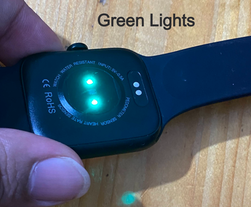

3,218


14,083


4,048

13,918

8,213
Updated: Dec 12, 2021
Before we can drive into HDR10 or HDR10+ display, we need to understand the HDR and of course what is HD.
HD stands for High Definition
HDR stands for High Dynamic Range
In the Display or photography, the term “HD” stands for high definition. If I describe simple words, this depends on number of pixel count. The HD displays has a higher definition and range of color in comparison to an old SD TV. Note the pixel density or the resolution of different HD type display available in the market.
HD: Sometimes termed as HD ready. 720p image resolution (1,280 x 720 pixels – approximately 1 million total pixels).
Full HD: Sometimes termed as FHD. 1080p image resolution (1,920 x 1,080 pixels – approximately 2 million total pixels).
Ultra HD: Sometimes termed as 4K. 4K image resolution (3,840 x 2,160 pixels – approximately 8 million total pixels).
In terms of images, the more pixels there are available in an image, the better its looks like. This is because if resolution is high which means more pixels, an image can be displayed at larger sizes without suffering picture degradation.
For an example, consider this: a 40" television with a 1080p image resolution (FHD) will be clearer, shaper and more natural than a 40" television with a 720p (HD ready) image resolution. However, to get the best out of the Display/TV/Monitor the source signals from the internet or Set Top Box should have the required resolution.
High Dynamic Range as it pertains to Displays allows for video and still images with much greater brightness, contrast, and better color accuracy than what was possible in the past. This technique expresses the details in content in both very bright and very dark scenes. It offers a more natural and realistic picture output even with a widened range of contrast.
For an example, in a very dark cave scene, HDR TVs show the appearance and colour of the cave walls as well as its texture. And in a scene with a yacht on the ocean, individual sunbeams are clearly seen shining regardless of the bright sunlit background. You're probably reading this article from your computer screen or mobile phone right now and if your device doesn't support HDR, you're missing out on the full experience and understanding of what HDR can really do.
From Samsung
On the image processing or capturing side also very important for HDR. During the image capturing using a Non-HDR digital/mobile camera, the exposure will only record a portion of that range of values which is usually the middle values. However, an over-exposed photo will have too much of the higher end values and an under-exposed photo will be heavy on the low end values. Using the first processing speed and latest image processing techniques, we can blend photos and display a wider range of values. HDR images should traditionally be a blend of at least three exposures, one under-exposed, one normal exposure, and one over-exposed. The blended image will then display all values from the smallest detail in the high end values (highlights) to the smallest detail in the low end values (shadows). All three photos should be of the exact same image and the same aperture setting. So, finally a brilliant and eye catching image will be stored.
HDR10 is a technical standard with specific, defined ranges and specifications that must be met for content and displays to qualify as using it. There are various kinds of HDR standards, but 'HDR10' is the most commonly used. HDR10 uses static metadata that is consistent across all displays. This means HDR10 video sets light and color levels in absolute values, regardless of the screen it's being shown on. It's an open standard, so any content producer or distributor can use it freely. The HDR10 format allows for a maximum brightness of 1,000 nits, and a color-depth of 10 bits. However, HDR10 is no longer the top of the HDR food chain.
Metadata refers to the additional image information found within content. This includes the colour and brightness information used in the HDR image mastering process.
HDR10+ is the advanced and improved version of HDR10. HDR10+ is a standard developed by Samsung. It is very much understandable from the name that HDR10+ takes all of the good parts of HDR10 and improves on them. They both utilize metadata to tell the display/screen how to show the HDR content, upgrading the view when you're watching a video. But the main difference comes in on how they tell the display/screen to do that.
HDR10 is a static technology, the "metadata" sending the information to the display/screen at the beginning of the video and from there, the display/screen uses that same information the whole time.
HDR10+ makes this "metadata" dynamic. Instead of a one-and-done signal (like HDR10), it's made with dynamic tone mapping that fine-tunes the settings continuously as your content plays. This ensure each scene looks as the director meant it to.
Samsung Galaxy S10 series is the first to support mobile HDR10+. The Infinity-O Display on the Galaxy S20, S20+, and S20 Ultra is an HDR10+ certified display. And thanks to dynamic tone mapping, you'll get incredible color and contrast that dynamically enhances each scene.









留言